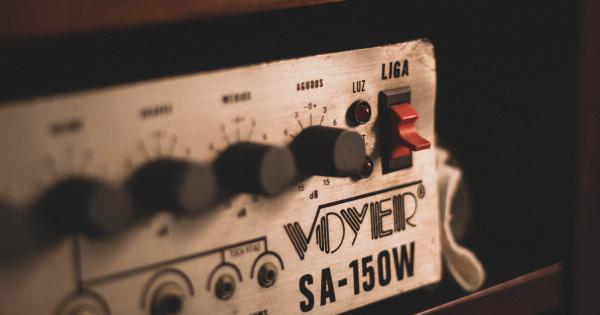Music has a profound impact on our emotions and cognition. From childhood lullabies to chart-topping hits, our brains have a remarkable ability to recognize and remember familiar tunes.
But how fast does this process occur? How quickly can our brains identify a familiar melody? In this article, we delve into the fascinating world of auditory perception and explore the speed at which our brains can identify familiar tunes.
The Wonders of Auditory Perception
Our brains are equipped with an intricate auditory system that allows us to perceive and process sounds. When it comes to recognizing familiar tunes, our brains rely on a combination of pitch, rhythm, and timbre cues.
These auditory cues provide the necessary information for our brains to make sense of the music we hear.
Early Musical Training and Familiar Tune Recognition
Studies have shown that individuals with early musical training tend to have enhanced abilities in recognizing familiar tunes. This can be attributed to the training’s positive impact on the brain’s auditory processing areas.
The brain becomes more adept at detecting subtle nuances, making it quicker at identifying familiar melodies.
The Role of Memory in Identifying Familiar Tunes
Memory plays a crucial role in our ability to identify familiar tunes. When we hear a melody, our brains compare it to previously stored musical memories in our long-term memory.
This comparison happens within seconds and triggers a recognition response if a match is found.
Neural Processing Speed
Neural processing speed refers to the swiftness with which information is processed in the brain. When it comes to recognizing familiar tunes, the neural processing speed varies between individuals.
However, research suggests that the average time it takes for our brains to identify a familiar tune is around 0.1 to 0.3 seconds.
Brain Imaging Studies
Brain imaging techniques, such as functional magnetic resonance imaging (fMRI) and electroencephalography (EEG), have provided valuable insights into the neural mechanisms involved in identifying familiar tunes.
These studies reveal that different brain regions, including the auditory cortex and the hippocampus, play a role in this process, highlighting the complexity of tune recognition.
Emotional Impact of Familiar Tunes
Familiar tunes have a powerful emotional impact on us. They evoke nostalgia, bring back memories, and often elicit strong emotions. Research has shown that our brains react differently to familiar tunes compared to unfamiliar ones.
The emotional centers of the brain, such as the amygdala and the nucleus accumbens, are particularly activated when we hear melodies that we know and love.
Expertise and Familiar Tune Recognition
Experts in a particular music genre or instrument have been found to have even faster recognition times for familiar tunes.
This is because their extensive knowledge and exposure to specific musical patterns enable them to quickly identify melodies within milliseconds. Their brains have become finely tuned to the intricacies of the music they specialize in.
Age-related Changes in Tune Recognition
As we age, our tune recognition abilities may undergo changes. Some studies suggest that older adults may experience a slight decline in their speed of tune recognition due to age-related cognitive changes.
However, other factors like hearing impairments and general cognitive decline can impact tune recognition as well.
Implications for Music Therapy
The fast identification of familiar tunes has significant implications for the field of music therapy.
Music therapists often use familiar tunes and personalized playlists to evoke positive emotions, stimulate memory, and improve overall well-being in individuals with cognitive impairments or neurological conditions.
Conclusion
Our brains possess a remarkable ability to quickly identify familiar tunes. With a combination of pitch, rhythm, and timbre cues, the auditory system rapidly processes sound patterns, comparing them to stored musical memories.
The emotional impact of familiar tunes and the role of expertise further enhance our tune recognition abilities. Understanding how fast our brains can recognize familiar melodies can lead to further advancements in the field of music therapy and cognitive neuroscience.



























